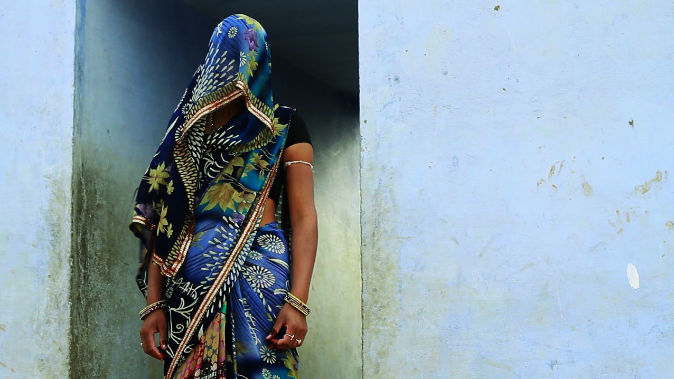The Sari Project: Bringing age-old fashion into the modern world

Living in North America, it’s hard to imagine that anyone, anywhere, could face a lack of fashion news. From hefty magazines to blogs, websites and television programs, the garment industry is well-covered in popular culture.
In India, it’s a different story. Despite the sari being a staple garments for millions of women in that country as well as Bangladesh, Sri Lanka, Pakistan and Nepal for 5,000 years, it’s shocking that there is no resource to explain how to drape a sari.
Border and Fall, a creative agency and digital publication based in Bangalore, wants to remedy this information gap with videos that demonstrate the 84 ways to drape a sari.
A Kickstarter campaign has already raised over $45,000 from 405 backers to help create the how-to videos, as well as three short films about the sari’s past, present & future.
This will be the “first complete digital anthology” on draping saris, the ubiquitous garment sill worn daily by many women.
We recently spoke about The Sari Project with founder Malika Verma Kashyap, a Canadian who moved to Bangalore, India 10 years ago.

Do most women in India wear saris today?
Many women in India “over the age of adolescence and post marriage wear the sari everyday,” but there are no statistics on exactly how many, says Kashyap. However in urban India, “There has been a large shift away from the sari as an everyday garment to one that is now seen as occasion wear.”
“It is a concern, because the sari – especially as a hand-loomed garment – is connected to the livelihoods of millions of weavers,” she says. “It’s a garment that offers so much, including the opportunity for India to embrace it as a garment of utility and as an aesthetic contribution.”
Will this project affect what Canadians wear?
“I don’t think this will necessarily translate into how people dress in Canada,” says Kashyap. “What I do hope, is that it addresses a perception shift required of the garment – equally in India and abroad. Many people feel there is a ‘correct way’ of draping a sari, and NRI’s [non-resident Indians] especially have a way of holding on to a culture preserved in time.”
A Border & Fall article suggests that NRIs , base their opinion of Indian fashion from when they left in the 70s and 80s. There are 25 million NRIs worldwide, with 150,000 Indian millionaires living outside of India. “NRIs who didn’t go back and forth much were connected vicariously through Bollywood films and the likes of Stardust magazine from their local Indian shop.”
“I would love for people outside of India who wear the sari to feel that they can experiment, and that it does not need to be so rigid in terms of how it’s worn,” says Kashyap. “I’d love for people dig into their mother and relatives’ cupboards. All my Indian friends in Canada have dozens (if not hundreds) of saris sitting in cupboards… I would love for the idea of wearing them to feel more accessible.”
One challenge of changing attitudes about modern styles and prices is that some customers still expect special occasion dresses that they were used to, and prices from decades past. However some websites are giving attention to the craftsmanship of handloom saris that are now popular India and the U.S., reports Border & Fall.
What does this project mean to you personally?
This project is very close to my heart. I’ve been wanting to do this for years and I feel very fortunate to be in a position to contribute towards a cultural undertaking of this magnitude. I have a wonderful team who is helping make this happen and who all feel connected to its importance, many of them not being from India. They are also linked to this feeling like an opportune time to address it. India is changing so rapidly – even in the 10 years I have been here. I do feel like now is the moment and that sense of urgency has given it greater meaning and importance.
The Kickstarter campaign has ended; The project is now 50 percent funded and the group is still taking international donations. Visit their website, BorderandFall.com for more information. The videos will be freely availably in the fall of 2017.

 Yahoo Finance
Yahoo Finance 
